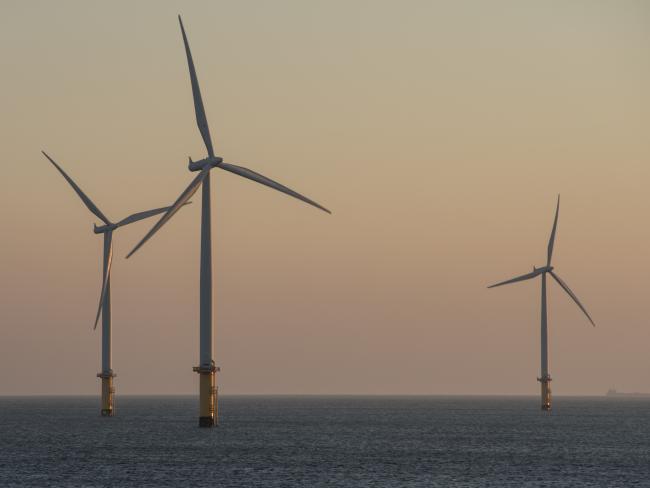28 September 2023

Teesside offshore wind farm, South Gare, Redcar. Photo pauljrobinson / Shutterstock.
The government’s approach to future energy supply depends heavily on wind power, dedicated as it is to net zero aims. But it’s as much off course with wind as it is with nuclear energy.
In the latest renewable energy auction this September, offshore wind turbine companies were invited to submit bids for the right to sell electricity. But not a single bid was made. And it’s not making great progress with onshore generation either.
Illusion
Government advisers had agreed a strike price of £44 a megawatt hour, hoping to maintain the illusion that the cost of wind power was coming down as they had predicted.
The going rate only eight years ago was three times that amount, guaranteeing huge profits. This time round, the industry reckoned there was nothing in it for them and walked away.
Enthusiasts
Enthusiasts and the renewables lobby were waiting to celebrate the success, with their claims that the costs of wind power are low enough to bank on continued expansion – and by implication to ignore developing nuclear power stations.
“The wind industry can’t afford to put up the projects.”
GMB, one of the principal unions involved in wind farm construction, and a long standing opponent of reliance on net zero, were unsurprised. GMB general secretary Gary Smith commented, “Whitehall told us wind was getting cheaper and cheaper. Now there will be no bids for the next round of licenses because the wind industry can’t afford to put up the projects”.
Speaking before the 27 September announcement permitting development of the Rosebank oil field, Smith was equally scathing of the Labour Party’s commitment to a net zero carbon electricity system by 2030 and the elimination of licenses for North Sea oil and gas drilling.
Hurdles
He said, “I don’t worry about it, it can’t be done. No amount of enthusiasm can overcome these particular hurdles. The National Grid can’t get (undersea) cables. There are four suppliers of cables in the globe, they’re all booked out to 2030”.
And the same day as news came of the failed auction, the government chose to trumpet all the other renewables projects that it is pumping money into. But the fact is that increasing wind powered electricity generation at the scale required depends on more offshore wind farms.
Political advantage
The government says it wants to encourage more onshore wind farms with changes to planning conditions, which it describes as the main obstacle. Again it misreads the realities in seeking political advantage. While there are planning delays, there are both financial and technical reasons why offshore farms are being built in preference.
While the nominal installed capacity of onshore and offshore wind generation is about the same, 14.6GW and 13.9GW respectively in 2022, the growth in onshore capacity has declined since 2018.
Almost all the increase in wind generating capacity has come from offshore wind farms. And offshore wind farms can use larger turbines and are significantly more efficient (ie more energy produced for equal nominal capacity).
Little added
Onshore wind does have some advantages; construction is much quicker than offshore, once planning permission is granted. Little onshore capacity has been added in the past few years, and hardly any in England.
New onshore wind farms under construction are, apart from one in northern Ireland, all in remote areas of Scotland. Conditions in those areas are more akin to offshore than to sites in more central areas.
Britain’s biggest onshore wind farm developer, SSE, has pulled out of building any new wind farms in England and Wales. They have also warned that future onshore projects in Scotland were likely to be limited. Alistair Phillips-Davies, SSE chief executive said the reasons were “…too little spaces, too many protests and not enough wind”.
